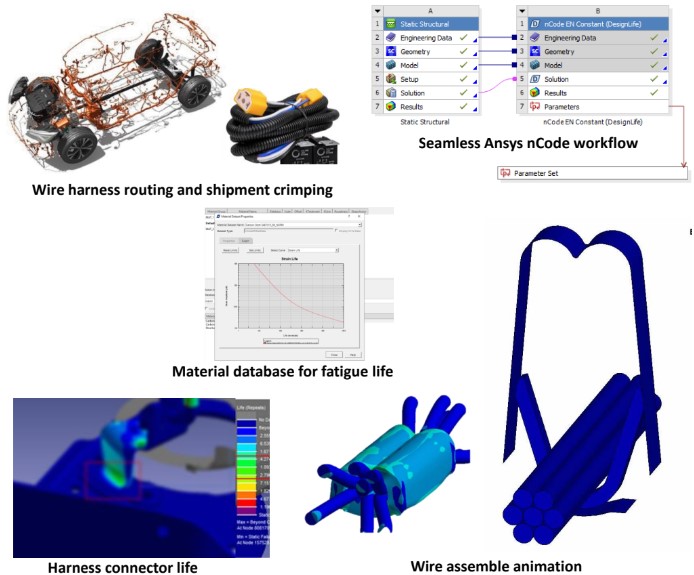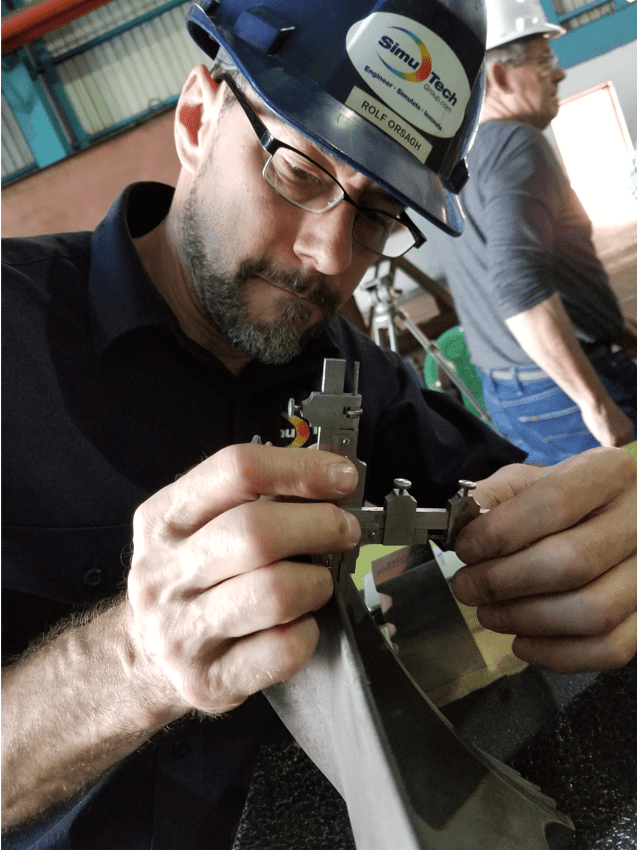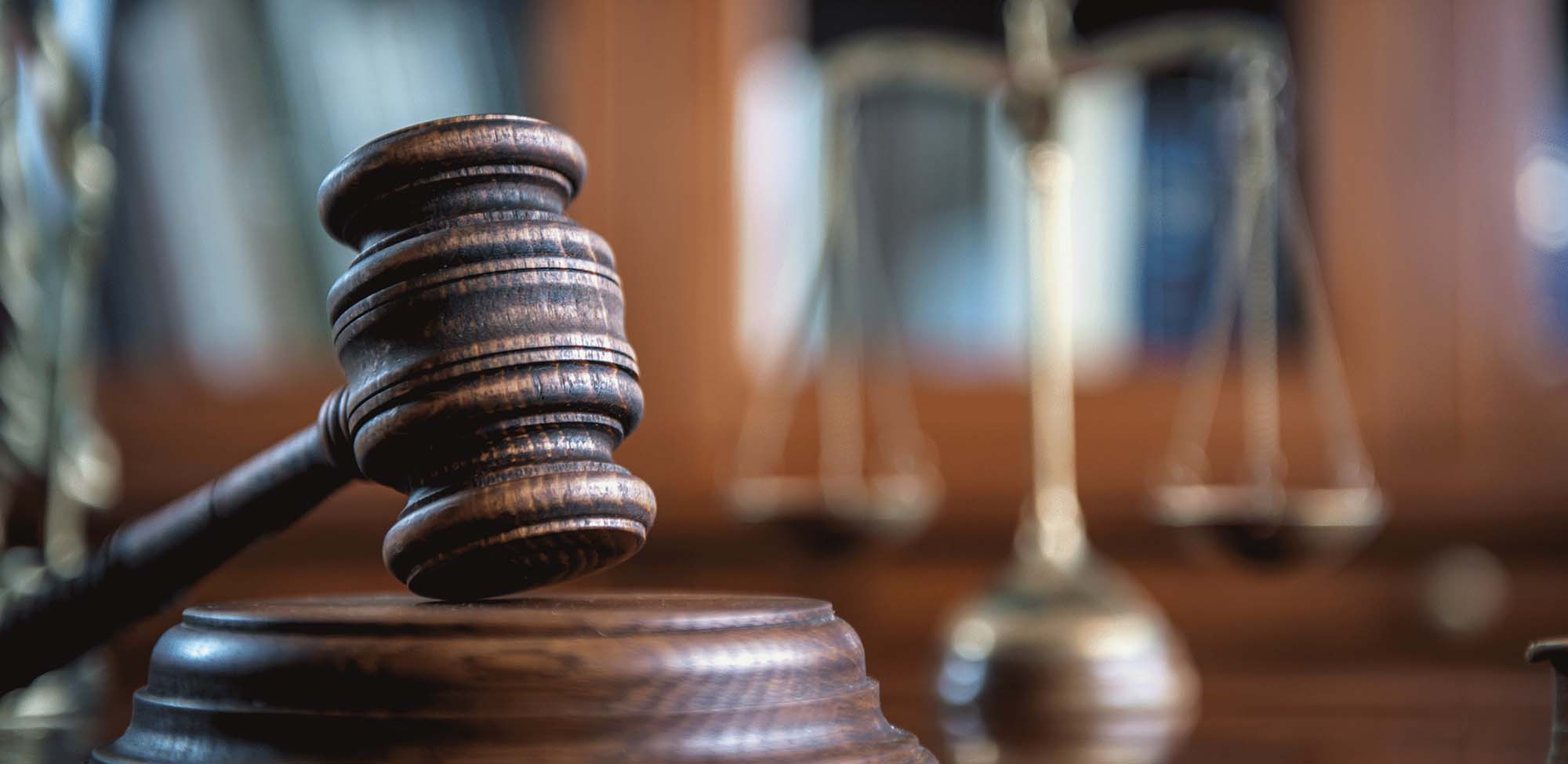Forensic Engineering Consulting & Expert Witness
SimuTech Group investigates damages that arise from engineering failures. We’ll pair you with an expert engineer to meet your specific industry needs.
SimuTech Group investigates damages that arise from engineering failures. We’ll pair you with an expert engineer to meet your specific industry needs.
SimuTech Group’s system for replicating events is based upon our engineering expertise combined with physical forensic testing, and cutting-edge computer simulation software.
We can use this to accurately simulate dozens of factors, such as operating and catastrophic loads, temperature fluctuations, and even the movement of fluids such as air and water.
This makes us the perfect choice to investigate or testify in cases that involve vehicles, equipment, spills, structures and/or testifying in court for cases involving failures (i.e. Expert Witness).


There is simply too much at stake to trust an unknown forensic engineering team to get the answers you need or help shed light on the truth in a court of law. Let us put our expertise with engineering simulation expert witnesses on your side.

When a bridge collapses or a car crashes, forensic engineers can turn back time like time travelers. Their task is to collect and examine data from the scene so they can piece together the entire event. In cases involving product responsibility or personal harm, the work of a forensic engineer is frequently presented as evidence in court. In their profession, forensic engineers must simultaneously act as a detective acquiring information and evidence and as an engineer using that information to assess the incident.
Recreating the materials involved in the failure or tragedy is one of a forensic engineer’s tasks. This is frequently done using model simulations of the many components at play. Consider car wrecks as an illustration. Forensic engineers work with law enforcement agents like detectives seeking out hints as to how the crash happened. The primary pieces of evidence are the car or vehicles that were involved in the collision. They can provide the forensic engineer with information about the impact angle, the involved speeds, and seat belt use.
The next step is to determine how much energy was required to produce the damage observed. Engineers from SimuTech Group thoroughly examine the data to identify what went wrong and, if appropriate, what could have been avoided or was not done in accordance with industry standards. Let’s continue using the example of auto accident testing, in which cars are driven at various speeds into concrete obstacles. Analyzing crash test records of the exact make and model of the vehicle involved in the incident is significant since the level of damage depends on the unique qualities (like stiffness) of the materials used to manufacture the automobile.
The speed of the vehicle at the moment of the impact can be estimated by comparing measurements of the car’s damage to crash test records. In a criminal prosecution, this information is frequently an important piece of evidence. Vehicular kinematics is the study of how vehicles moved prior to, during, and following a collision. Examining passenger movement prior to, during, and after an accident is a crucial component of a forensic engineer’s job. The term for this is occupant kinematics. The forensic engineer can determine an occupant’s peak accelerations from crash test data. These accelerations may be greater than the vehicle’s peak acceleration, particularly for the head and neck. An occupant’s peak acceleration can be calculated to help identify the injury’s root cause.
Investigating crashes has convinced SimuTech Group engineers on the importance of education. Case studies are a useful tool for learning more precisely about the properties of polymers and composites, which is crucial for their safe application.
Given the significance of the topic for designers, it is regrettable that textbooks frequently disregard many of the facts of product failure. Additionally, textbooks frequently place more emphasis on the theoretical features of specific materials than on the practical issues associated with employing those materials for safety-critical components.
In contrast, as metals and alloys have a long history, much is known about the safe application of these materials over both the short- and long-term. However, this doesn’t stop failures in goods created with those components, as new issues inevitably arise (and businesses/people alike, recommit the same errors). On the other hand, many failure modes are well known, can be identified with certainty, and the design team can take the necessary measures, as long as they’re willing to do their homework.
Returning to the emphasis of education, SimuTech Group consulting engineers believe this debriefing component as paramount to the overall service offering. That is, if businesses and individuals are aware of the perils that a certain structure or product can produce under even minor variable changes, the public will be safer, and businesses safer from expensive and brand-tarnishing litigation.
The analysis of problems – ranging from serviceability to catastrophic – which may lead to legal activity, including both civil and criminal, is how forensic engineering is formally defined. It entails looking into substances, items, buildings, or other parts that malfunction, do not perform or function as intended, and result in harm to people or property or financial loss.
Failure may result in legal action under civil or criminal law, including but not limited to health and safety regulations, contract and/or product liability laws, and tort laws. Retracing processes and procedures that result in accidents when operating machines or vehicles is another aspect of the field.
A forensic engineering study typically aims to identify the cause or causes of failure in order to increase a component’s performance or life or to help a court determine the circumstances surrounding an accident. Investigation of intellectual property rights, particularly patents, may also be involved.
Forensic engineers in the US are required to hold a professional engineering license from every state. Relevant expertise and qualifications, including a Professional Engineering (PE) license, is required for all forensic engineering investigations in Canada as well, though administered and held at the provincial level.
In order to uncover problems and their solutions, forensic engineers employ a wide range of techniques. Among the most popular and frequently employed technologies are:
A nondestructive maintenance technique called thermal imaging or infrared thermography measures the quantity of thermal radiation that things release, which is then converted to temperature.
In order to make things that emit more thermal radiation than others look brighter in color, infrared photographs are typically colorized (yellow, red, and white). Darker shades of blue, purple, or green denote cooler items. Infrared signatures frequently reveal temperatures inside buildings, even though thermal imaging typically only detects surface temperatures.
The thermal imaging camera is a favorite tool in the field. The camera detects variations in material temperatures, which is useful in spotting possible problems. As a result, engineers can, for instance, discover a potential moist spot inside a wall or uncover an air leak that isn’t visible just by glancing at the wall.
Engineers that specialize in forensic civil and structural engineering conduct investigations and collect information on the structures, goods, parts, or materials that have failed. This is a crucial position with repercussions for society as well as for business. In short, the public will be safer and businesses will be protected from costly and reputation-damaging lawsuits if both firms and individuals are aware of the dangers that a specific structure or product can cause under even modest variable changes.
Additionally, a forensic engineer’s findings can be presented in court as proof. As a result, they are qualified to give testimony. Lawyers who are attempting to decide which questions to ask in a deposition or who just want some insight may also consult them. They are crucial in disputes involving structural breakdown and the ensuing damages.
Forensic engineers can conduct their investigations for research goals in addition to offering evidence for legal proceedings. In these situations, the objective is to better understand the source or causes of failure and to determine ways to avoid experiencing comparable losses in the future.
Overall, public safety, economic benefits from reliable transportation of materials, and consistency in safety for future building projects and/or consumer items can all result from proper forensic engineering analysis. Awareness of the risks of a potential failure, and the subsequent use of the proper prevention and redesign methods, pay its societal dividends for years to come.

Businesses generally need to hire a forensic engineer once something on a project or in an operating process has failed. Their task is to determine what went wrong. Anything from automobile collisions to equipment malfunctions, even fires or explosions, may benefit from forensic engineering services.
They are also in charge of assisting with future prevention of similar problems at your workplace or on the project site. All-and-all, using a forensic engineering consultant can help a lot of different sectors; continue reading to find out more about the benefits of hiring a forensic engineer, and what they can do for your company.
Many businesses utilize forensic engineering consultants to help them identify who is responsible for the costs and damages brought on by an occurrence. There is a measure of culpability to be decided in major accidents like an explosion that harmed or even killed workers and damaged a facility or the nearby communities. A forensic engineer can shed light on who caused the disaster and who is accountable for covering the price of repairs and other losses.
This also applies to less catastrophic failures, such as a car accident that didn’t result in any injuries but severely damaged one or more vehicles. Forensic engineers can establish who is legally responsible for the damages and associated repair or replacement expenses in situations like this.
Liability must be established since many accidents and occurrences can be highly expensive. However, a forensic engineering analysis frequently involves more than just answering “yes” or “no.” The party conducting the investigation may benefit from a prorated liability grading produced by a forensic engineering analysis (if merited, and backed by concrete data).
A residential home fire serves as an illustration of this. The family is in need of answers right away because they were probably pushed from their house and are now living in a temporary place. Even a home with little fire damage may become uninhabitable for months, years, or permanently due to the harm that fire may do to the structure of the building and the mold development caused by the water pressure used to put out the fire.
Frequently, the party liable for these expenses is the insurance company. A forensic engineer’s assistance can be very helpful to insurance companies in these situations because they can establish fault, which in some cases can reduce or eliminate the insurance company’s liability in the incident.
To identify the root of the breakdown, forensic engineers can be useful. You can better comprehend the incident’s underlying cause with the aid of this finding. Studying the location and learning about the harm helps them do this. They can determine the root of the problem thanks to their vast training. Finding the problem’s root cause is essential since it links the issue to the place and thing that malfunctioned in the first place. Finding the reason for the failure or occurrence is helpful for insurance and legal reasons.
Finding the root of the problem is important for insurance purposes since it establishes legal liability. This may shift the culpability from the insurance company’s negligence to a different party. For their most complex cases, many insurance firms frequently use a reputable forensic engineer. This makes it such that insurance companies are only accountable for the specific conditions they had previous to the catastrophe.
As it relates to RCA (root cause analysis), another reason why many businesses employ forensic engineers is to assist in contextualizing and offering tangible material findings during court cases or lawsuits. In many different businesses across numerous industries, including the pipeline, manufacturing, construction, distribution, transportation, and many more, forensic engineers are a wonderful asset.
Moreover, a forensic analysis aids in preserving proof of causation, and a forensic engineer may even testify as an expert witness in challenging legal matters. If your business has ever been involved in or is presently involved in a dispute over liability or a court lawsuit as a result of an occurrence, forensic engineering services may be beneficial.
Moreover, businesses can learn more about the failure’s cause with the aid of forensic engineers. This is the action that follows figuring out the cause (RCA).
Forensic engineers can pinpoint what went wrong for the incident to happen in the first place once the exact cause of the occurrence has been identified. A warehouse fire might have been started by a circuit breaker, but knowing why it occurred would entail investigating the precise type of failure the breaker encountered to start the fire, with defective wiring being one possibility.
Therefore, while a malfunctioning circuit breaker is the primary factor, improper wiring was the original contributing factor. As a result, the warehouse’s original wiring is at fault. Depending on the agreement, this might be attributed to the builder, the electrician, or the owner of the present warehouse.
For the sake of your business’s future, it is critical to understand why the failure occurred. For the benefit of your employees and your business as a whole, you want to be able to identify the root reason and be certain that it won’t happen again.
And, perhaps most importantly, to ensure a secure future and longevity for your business, having a professional engineering firm place their seal of structural or product-level confidence, is paramount in regaining trust from shareholders, business partners, employees, and the general public.
In the same way that proactively preventing future mishaps is necessary to maintain safe operations following a disaster, knowing why the failure occurred is crucial to the operation’s long-term health and safety.
In addition, once the cause of the problem has been identified, forensic engineers continue to work with you and frequently go above and above because the safety of your operation is their first priority. They can assist in identifying the problem’s fundamental cause and suggested solutions to stop it from happening again. They can also work with you and your company to select a consultant who can help avert any future problems of a similar nature.
The way in which a component, subsystem, or system can possibly fail to fulfill the design objective is referred to as a potential failure mode. The possible failure mode could either be the result of one in a lower level component or be the source of one in a higher level subsystem or system.
FMEA (Failure Mode and Effects Analysis), correspondingly, is a systematic series of activities meant to assist a designer or engineer in analyzing the design of a system (product or process). This ensures that, to the extent possible, potential failures, their associated causes, and their potential effects have been taken into consideration and addressed.
A cross-disciplinary team reviewing the design in an organized manner to find probable flaws and their underlying causes so they may be fixed is the benefit of an FMEA. The review is organized using an FMEA document to reduce the chance of missing something and to record the review’s findings. By demonstrating the actions taken and providing proof that the risk has been reduced, documenting of the results helps with follow-up and closing the analysis.
Performing an FMEA on a design can lower litigation risks because it shows evidence of due care, or what a reasonably knowledgeable person would anticipate to ensure that products are developed, made, and delivered in compliance with applicable government requirements in a non-regulated environment. By identifying critical adjustments early in the product development process, when they are still relatively affordable to make, FMEA analysis can also drastically save costs. Late in the process or after manufacturing, adjustments are far more expensive (which most businesses have likely learned through the pain of process).
Additionally, while the industry is advancing in a way in which niche or specialty testing has become more popular, here are three major branches of FMEA widely used, and recognized in the industry:
Although every FA (failure analysis) has its own steps and sub-steps unique to a sector or line of business, the following 10-step process has been provided as a general guide:
A failure analysis is quite similar to a detective’s work. During the course of the study, significant hints are found that shed light on the failure’s potential causes and contributing elements. A thorough understanding of materials in general is beneficial to the failure analyst. The chances of success increase if the analyst is familiar with the mechanical, physical, manufacturing, and performance traits of the failed material. Additionally, the analyst needs to be familiar with structural design and stress behavior, at minimum.
Does a Component Need to be Completely Broken to be Classified as a Failure?
Short Answer: No
When a part has degraded to the point of being unsafe or only partially able to carry out its intended function, it is deemed to have failed. An item need not be entirely broken in order to be considered a failure. As an example of a failure, think of a fracture. When cracks start and spread to varying degrees, they cause a material to fracture. They might not succeed in doing so. Mechanical strains, chemical or environmental impacts, heat’s effects, impurities in the material, or a combination of these and many other variables may cause cracks to form. The failure analyst’s role is to comprehend how important each of those aspects is in relation to another in a given situation.
Our team of experienced engineers can assist you at any step of your process.